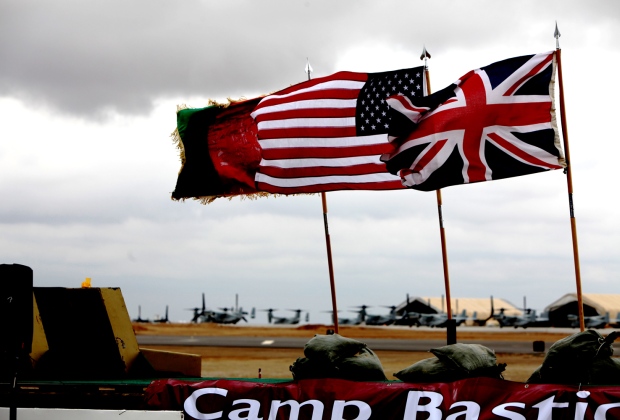
From , Washington Post: The Taliban fighters who blew up a half-dozen U.S. Marine fighter jets on a sprawling NATO base last fall were able to walk easily onto the encampment because patrols of the perimeter had been scaled back and watchtowers left unmanned, according to senior military officials.
After the attack, which resulted in the deaths of two Marines and the largest loss of allied materiel in the 11-year-long Afghan war, the top U.S. commander on the base did not order a formal investigation into the security lapses or sanction any personnel responsible for guarding the facility, the officials said.
In the days following the raid, some U.S. and NATO military leaders insisted that the Taliban got lucky by choosing to breach where they did. But several officials with direct knowledge of the assault said in recent interviews that staffing decisions by U.S. and British commanders weakened the base’s defenses, making it easier for the insurgents to reconnoiter the compound and enter without resistance. Once inside, 15 insurgents used grenades to destroy almost an entire squadron of Marine AV-8B Harrier jets, a loss estimated by military officials at about $200 million.
The new account of the attack illustrates the challenge of withdrawing troops from Afghanistan in the coming months. Unlike Iraq, from which U.S. forces departed largely peacefully, Afghanistan remains perilous. U.S. intelligence officials say Taliban operatives are on the lookout for opportunities to strike if U.S. and NATO commanders reduce security as they send home thousands of troops.
The attack occurred on Camp Bastion, a British-run NATO air base in Helmand province that adjoins Camp Leatherneck, a vast U.S. Marine facility that serves as the NATO headquarters for southwestern Afghanistan. Because Leatherneck does not have a runway, the Marines use Bastion as their principal air hub. Several hundred Marines live and work on the British side, and dozens of U.S. helicopters and fixed-wing aircraft park there.
The British are responsible for guarding Bastion, which is ringed by a chain-link fence and triple coils of razor wire. There are numerous tall watchtowers on the perimeter, which allow sentries to scan the horizon for potential attackers. Instead of placing their own soldiers in the towers, British commanders handed the job to troops from the Pacific island of Tonga, which has sent 55 soldiers to Afghanistan.
On the night of the attack — Sept. 14 — the tower closest to the Taliban point of entry was unmanned, according to four U.S. military officials who were at Camp Leatherneck at the time or received briefings about the incident later. Those officials and other military officers interviewed spoke on the condition of anonymity because they were not authorized to discuss the attack or security measures at Camp Bastion, key elements of which remain classified.
Several watchtowers at Bastion were manned at the time, but the Tongan soldiers in those posts could not observe the area around the empty tower, the officials said. “There was dead space,” one official said.
A senior U.S. officer with direct knowledge of security on the bases said it was common for Bastion’s watchtowers to be unmanned. Long-standing U.S. military security protocols permit towers to be unoccupied only if other posts can observe the unmanned tower’s entire area of responsibility.
“Security at Camp Bastion is constantly reviewed . . . and is appropriate to the currently assessed threat level,” the British Ministry of Defense said in a statement responding to questions from The Washington Post.
U.S. Marines responsible for protecting Camp Leatherneck and Camp Bastion have not relied on watchtowers alone to protect the facilities. Since U.S. troops established Leatherneck in 2009, teams of Marines have patrolled a 230-square-mile swath of desert around the bases in an attempt to identify Taliban activity and persuade residents in makeshift villages there to report on suspicious activity.
In December 2011, 325 Marines were assigned to patrol the area, according to the senior U.S. officer with knowledge of security measures. In the month before the attack, however, the number was cut back to about 100, the officer said.
“We reduced the force to patrol [the area around the base] to the point where it was an unacceptable risk,” the officer said.
The top U.S. commander at Leatherneck at the time, Marine Maj. Gen. Charles Gurganus, who approved of the reduction, said force levels for perimeter patrols were based on U.S. and NATO assessments of possible threats. At the time, other military officials said, Marine intelligence analysts did not issue any specific warnings of a frontal assault by the Taliban.
“You can’t defend everywhere every day,” Gurganus said in response to a question about the attack. “You base your security on the threat you’ve got.” He said the Taliban caught “a lucky break.” (photo: Derek Carlson/USMC)
Image: marines%204%2022%2013%20Camp%20Bastion.jpg
